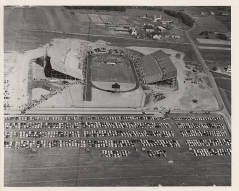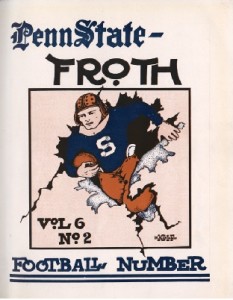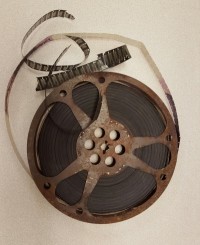This post was written by Andrew Gearhart, Web Developer in the Libraries’ Publishing and Curation Services department.
The International Image Interoperability Framework (IIIF) was created by a group of technical pioneers who are working to standardize the availability of images, making them accessible from multiple types of image stores to be used in variations that need not be pre-created. IIIF allows for dramatic flexibility in content delivery in multiple application contexts.
To give you an example, let’s take a digital image, scanned from a photograph in the Penn State Campus History collection, an archive of architectural renderings, documents, and aerial imagery. At upper left is a photo of Beaver Stadium showing the structure as it existed following the move from the northwest side of campus. With fewer than half of the number of seats of the current stadium, the older venue accommodated a total of 46,284 fans. It’s a great photo for folks who are interested in the history of Penn State football. Read more…







